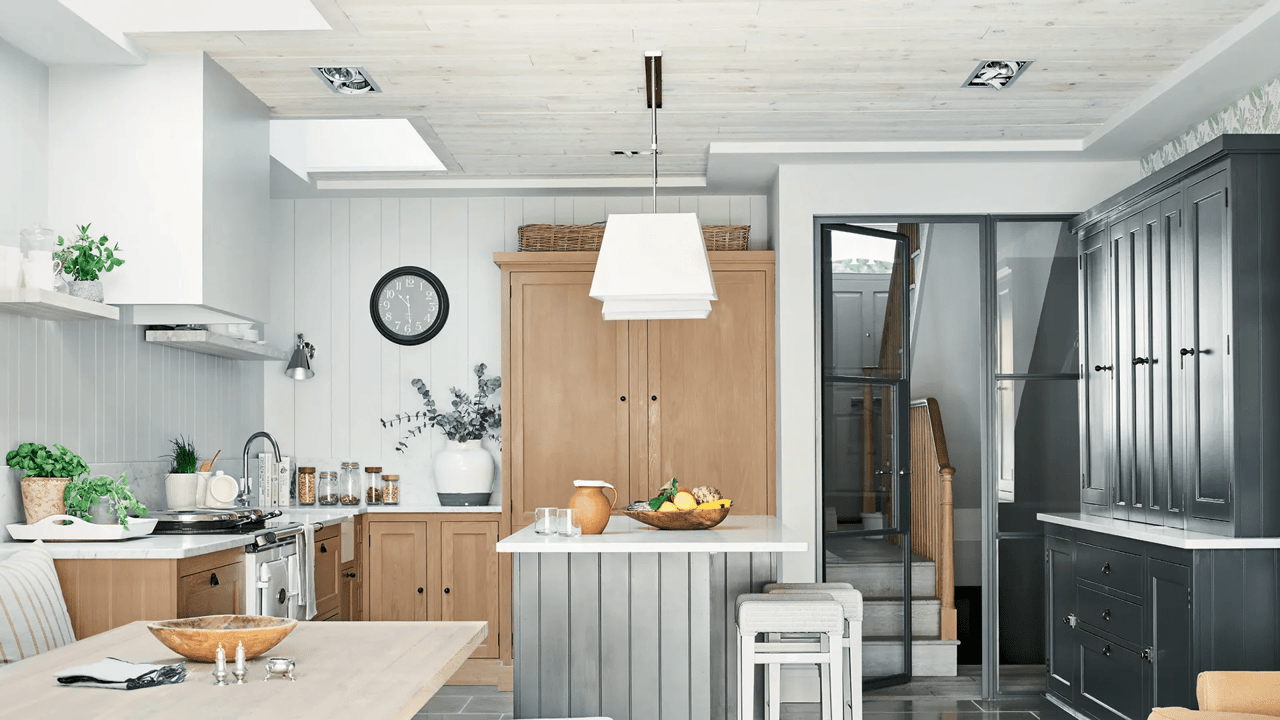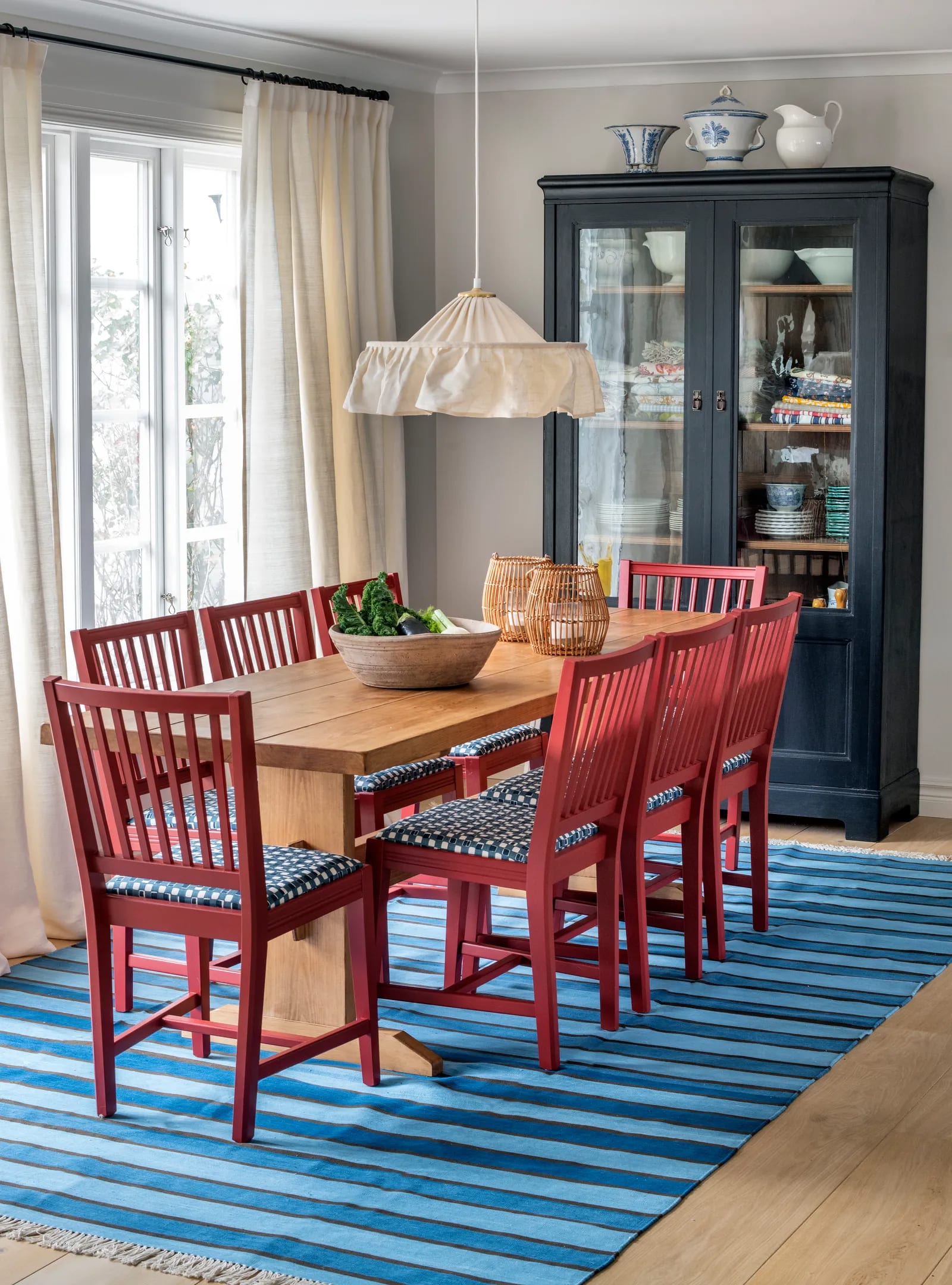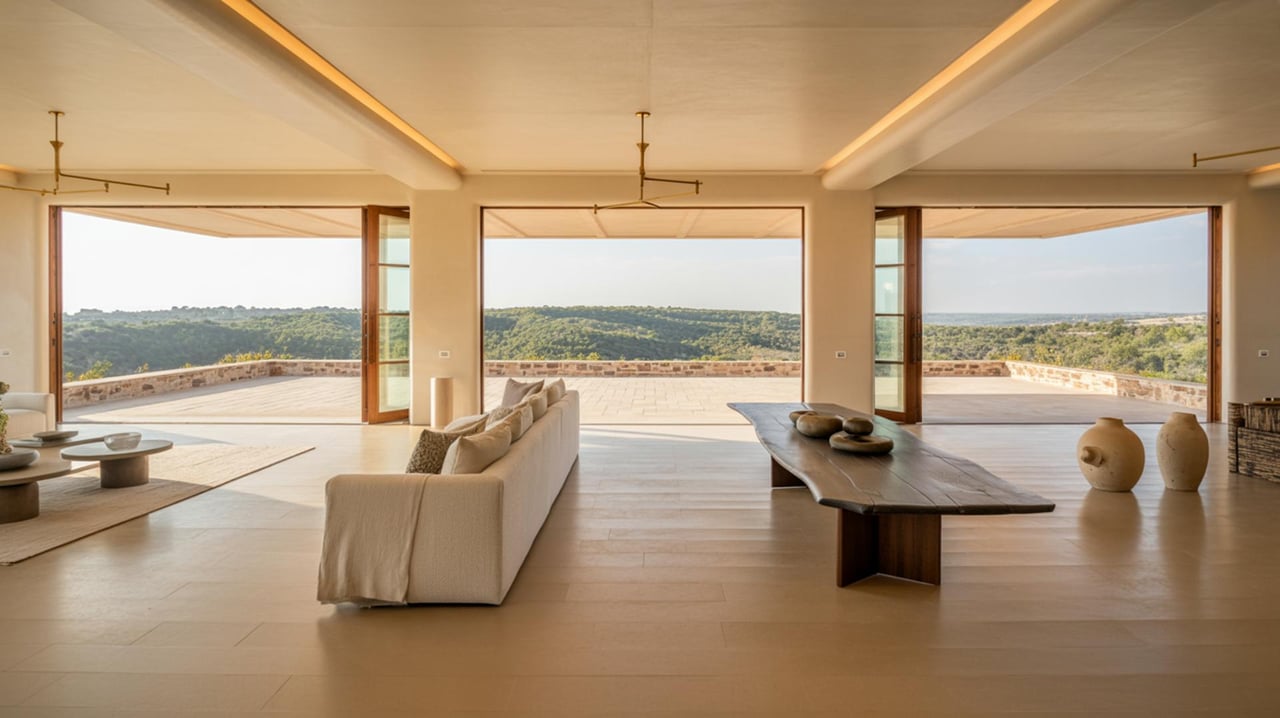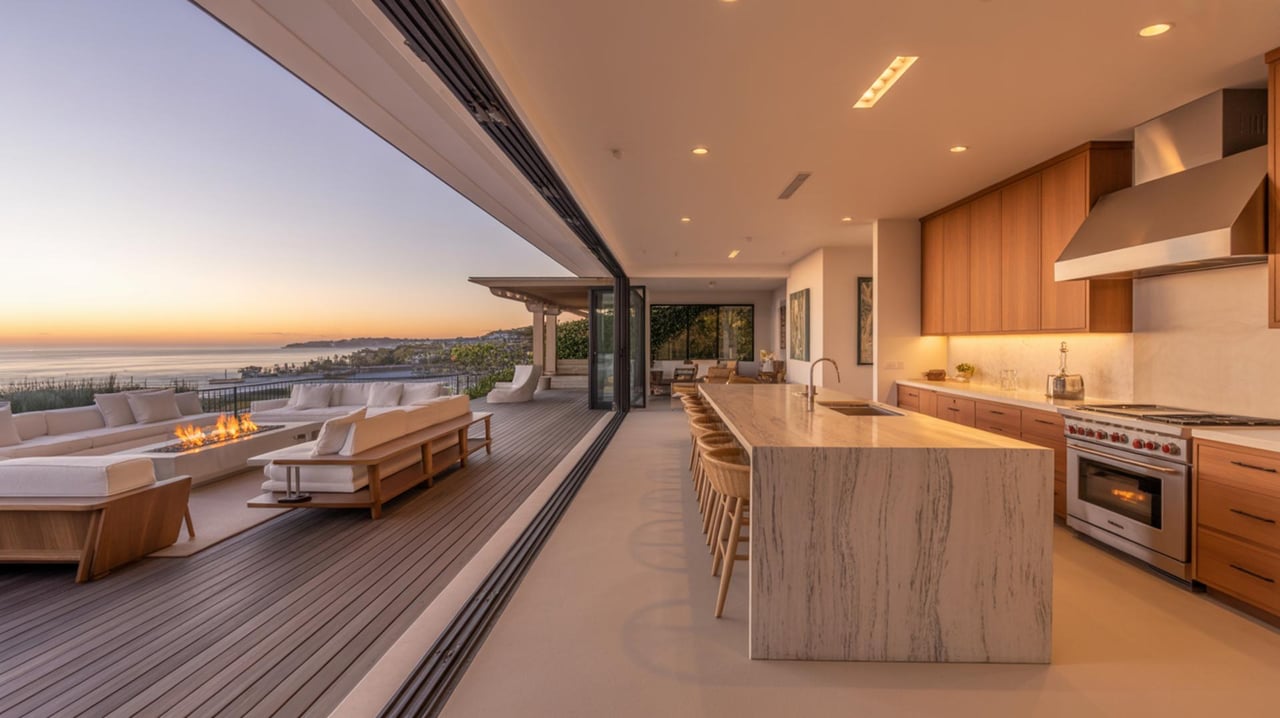Every so often, a new design description creeps into colloquial use, becoming a means of reference for a particular style of interiors. ‘Modern farmhouse’ is such a term; along with ‘modern country’ (the two are not dissimilar) it’s being used by decorators, designers and enthusiasts alike, and anyone who works in interiors will doubtlessly have received the same slew of press releases that I have, naming it as the most popular interior design style in the United States. Recent articles in the broadsheets have related it’s rise there to the opening of certain (British) kitchen showrooms in New York, specifically Plain English and deVOL, as well as the pervasive influence of Soho Farmhouse – and that is relevant, but it’s not the whole story.
What is significant about ‘modern farmhouse’ is that it is perhaps the first new style since the advent of Instagram to become popular despite Instagram (although there are almost 3 million uses of the hashtag). True, it could be seen as a natural segue from cottagecore, in that it still appeals to our obsession with the back-to-basics rural dream, however unlike cottagecore very little about modern farmhouse plays to the Instagram algorithms: it’s not about bright colours, busy patterns, frills, table-scaping or easily-acquired stuff – in other words, it’s not a style that has derived from people putting form over function.
Rather, modern farmhouse is genuinely lifestyle-driven - with benefits; “it’s chic, sophisticated and grown-up – but it’s also a liveable, relaxed look, family-oriented, good for pets – and it works both in the country and in town,” says Emma Sims-Hilditch, whose London home is proof of that final point. Cathy Nordstrom talks about the style “conveying warmth and a sense of embrace,” and praises it for being “not too precious.” All in all it sounds both appealing, and useful, particularly as you don’t actually need a farmhouse; “it even works well in a newbuild,” says Emma - so, what are the vitals? How does modern farmhouse differ from a more generic farmhouse style? And how might this new look impact our own interiors (if it isn’t already)?
A focus on back-of-house rooms with practical purpose
It was the great and inimitable Elsie de Wolfe who described the tenets of interior design as ‘proportion, practicality and suitability.’ Those three ingredients can be used in varying degrees; notable is that farmhouse style has always focussed more on practicality and suitability. The reason a farmhouse kitchen has traditionally been so big, and the heart of the house, is that it is a sociable space as well as somewhere for food preparation – and that hasn’t changed: a good modern farmhouse kitchen will still be indicative of “a cup of hot tea for a guest at any time. . . and hot buttered toast to start the day,” says designer Tori Murphy (who’s got a good line in modern farmhouse accessories, from aprons to oven gloves, and more.)
But with modern farmhouse style, that purpose has extended far beyond the kitchen. “There’s a lot of focus on what were once back-of-house rooms,” says Emma. “The laundry room, the pantry, a walk-in larder, the boot room – or ‘mudroom’ as it’s known in the US – and maybe even a flower arranging room have all become as important to the scheme as any of the formal rooms, and have become designer spaces.” While a large country house would have these rooms anyway, a Victorian or Edwardian terrace wouldn’t – but space is being found for them by way of clever configurations of layout, and “well-planned fitted joinery,” says Emma. For example, Buchanan Studio created a pod for their laundry room and pantry within their large, open-plan kitchen; in other cases, extensions are being planned precisely for these service rooms.
Materials, furniture and finish are natural and neutral
To return to the kitchen, key is that it is still a room that can withstand muddy boots, muddy dogs, and potentially even the odd hand-reared lamb or five – even if you’re more Highgate than hill farm. A range cooker, whether an Aga or Everhot, is as equipped to cater to a hoard of teenagers as it is to farmhands, and a large kitchen table is a must.
Elsewhere in the house, yes there are antiques, but they could tend more towards “architectural mid-century pieces,” says Emma. Alongside, “maybe there’s a Swedish clock, or a French armoire – items that brings gravitas but feel modern, which can mix in with actual contemporary pieces,” she says. At the same time, it’s important to avoid a surfeit of twiddly side tables – or anything else - that would prevent you from striding efficiently through a room.
Fabrics are “nubbly linens, textured wool, sheepskin, and boucle,” all in a natural and neutral palette “which can create an amazing effect.” If you do want pattern, think stripes and ticking rather than chintz or gingham (gingham curtains definitely being cottagecore, especially when short and given a frilled edge) – “though a large check can be very modern farmhouse,” says Emma. Equally, if you’re wedded to florals, focus on the more botanical variety, such as Tess Newall’s new Secret Garden wallpaper, or Lake August’s meandering nasturtiums.
Accessories need to serve
Vital to the modern farmhouse look is a cleanness of line that refers back, again, to suitability and practicality; this is possibly not the moment for chair skirts, gathered valances, frilled cushions, or fussy collections of china ornaments. Instead, suggests Emma, you might want to look for beautiful copper pans - that you can actually use for jam-making. Essentially, clutter needs to be minimised. The exception is jugs of flowers, fresh from the garden, that bring the outside in.
But there’s fluidity to the style
Paramount is that modern farmhouse is not a style that demands academic application, not least because you are probably not designing interiors for an actual farmhouse, and the tenets of practicality and suitability need only to apply to your life rather than an imagined situation that sees you working the fields from dawn to dusk. Indeed, it is because of this reality that modern farmhouse is so refreshing; the admission of needs regarding back-of-house rooms feels like a step forward from styles that are rooted in the grandeur of the past.
And you can mix and match; bringing in English country house style, as well as other influences. Emma explains that she’s long been inspired by Provençal design and sees elements of it within modern farmhouse; for Cathy, “modern farmhouse is an aesthetic that sits very closely with Swedish summerhouse style, which consciously steers away from schemes and moodboards.”
Essentially, modern farmhouse is mostly a recognition of a way of life that is relevant to contemporary times, promising ease, comfort and convenience as well as a subtle beauty. As such it can evolve – and thus it holds within it the promise of longevity.








